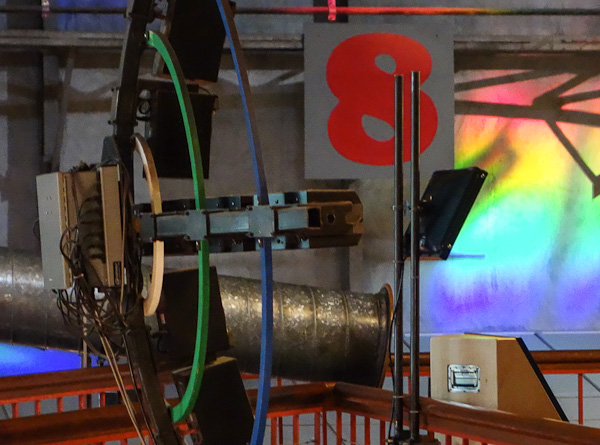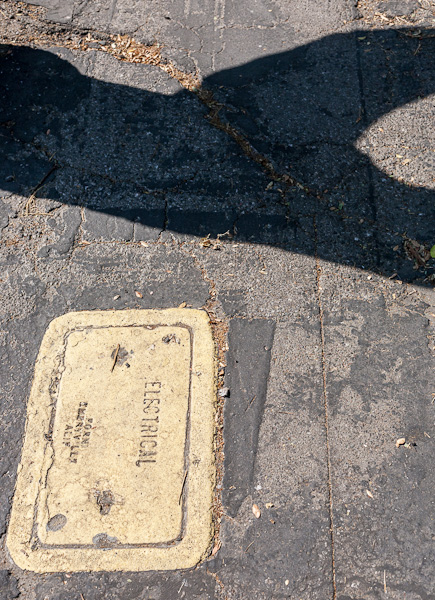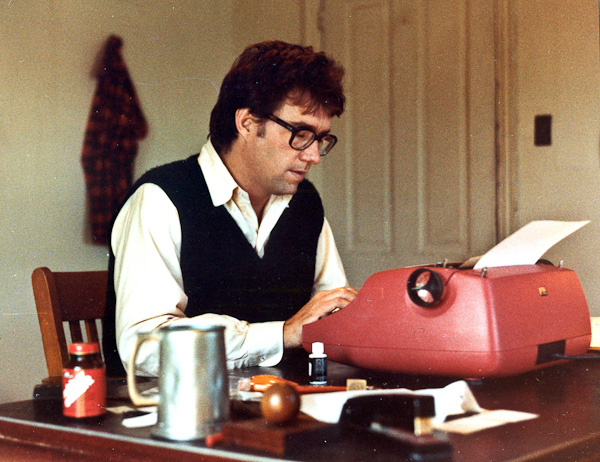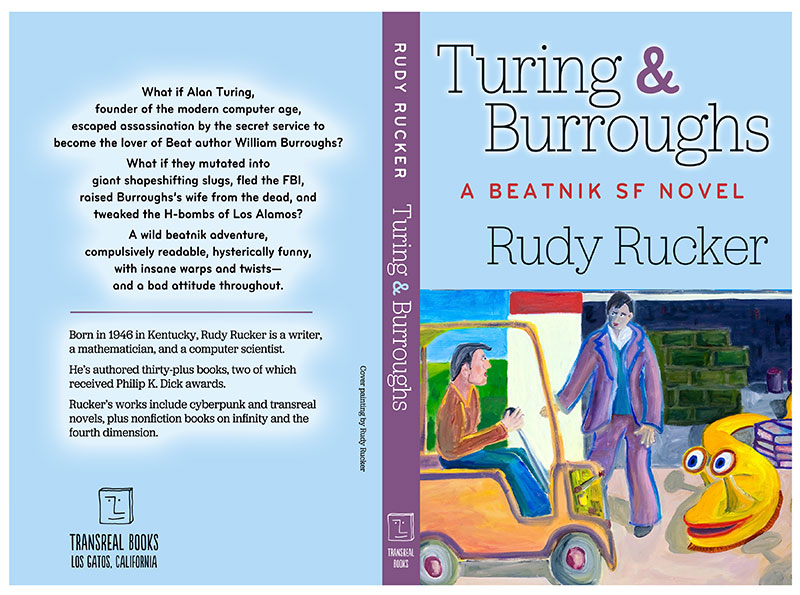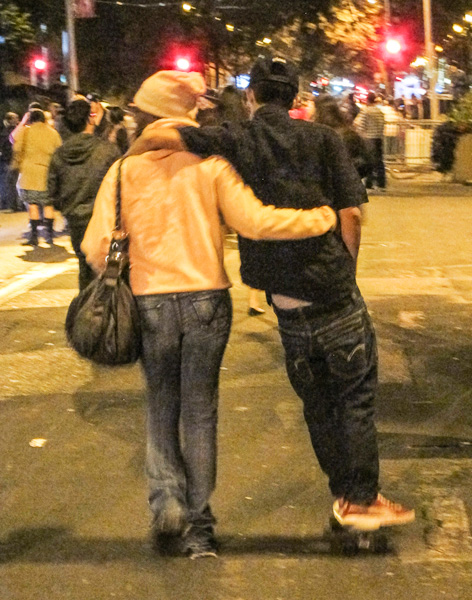Today’s post is based on a talk that I gave at the Philip K. Dick Festival in San Francisco, on September 22, 2012. The talk discusses my sightings of Phil’s ghost, my Dick Award events, and some remarks on my novel Turing & Burroughs
Kitty Gainer of Filmhaus Video recording the proceedings, and you can see the video on YouTube. Kitty kindly provided me with an audio podcast of my talk as well. You can click on the icon below to access the audio via .

It was a good time at the fest. I saw my old friends Charles Platt and Michael Travers, got to hang out a little with the exultant SF-ghetto-escapee Jonathan Lethem, and made some new friends, including (name checks!) Ted Hand, Gregg Rickman, David Gill, John Simon, Kitty Gainer, Autumn Tyr-Salvia, Henri Wintz, Brad Scheiber, and Erik Davis.
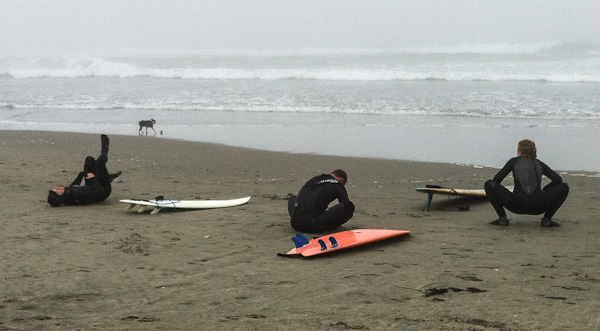
Jonathan Lethem gave a nice keynote talk, highlighting two turning points in PKD’s writing career. The first, which Jonathan called the “Marin County integration” was when Phil started infusing his SF with writing about his real life, as in A Scanner Darkly. This move is what I myself call transrealism, see my 1983 essay, “A Transrealist Manifesto“) and my recent talk, “What is Beatnik SF?”
PKD’s second turning point was what Lethem calls the “Orange County integration,” and it’s a bit harder to specify what this is. It has to do with the fact that in Phil’s later works, we hear the voice of the author spinning out stories in late night bull sessions, as in Valis. It’s more vernacular, more oral than before, more in a folk tradition of tall tales, and with the author as a literal, undisguised character in the book. You might call this naked transrealism. Norman Mailer, Hunter Thompson and other “new journalist” use this mode, but it’s kind of rare to see it in novels. I myself published a naked transrealist SF novel around 2001, Saucer Wisdom, but it didn’t go over nearly as well as Valis.
Getting back to the main point of this post, a written version of my “Haunted by Phil Dick” talk appears below.
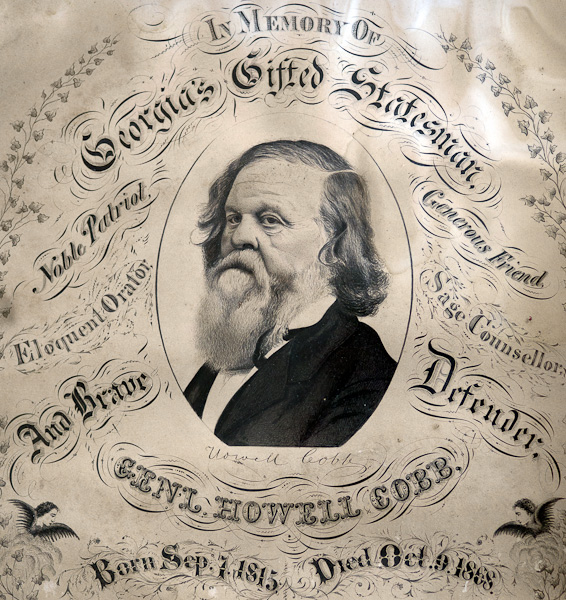
[My ancestor, Howell Cobb, one-time governor of Georgia. Shown here apropos of, uh, living in the South.]
In the spring of 1982, I’d just learned I was losing my day-job as a professor in lowly Lynchburg, Virginia, and I was singing in an amateur punk band called the Dead Pigs.
Phil Dick died around then, and I started thinking about him a lot. Every day, starting out, I’d pray to Phil Dick and ask him for guidance—to some extent I was trying to run a mental emulation of him.
I heard I’d been nominated for the first Philip K. Dick award (for my novel Software) and I felt I had a good chance of getting it. I begged Phil, or my internal simulation of him, to make sure I would get it. I’d done five SF paperbacks at this point, and was getting zero recognition. I really needed a break.
That winter—in January ‘83—my wife and I went out to a party at a house in the country. We didn’t know too many of the people—they were sort of rednecks, where those days in the South a redneck was person with long hair and a scraggly beard. It was mellow, plenty of weed, loud music, and everyone getting off.

[Actually this is Paul Di Filippo. Who can you believe?]
At some point I glanced across the room and in walked Phil Dick. He didn’t say he was Phil Dick, but he looked to be wearing his circa-1974 body…hair still dark, beard…hell, I don’t know what Phil Dick “really” looks/looked like, but I knew this was the guy.
At first I just grinned over at him slyly—like Aphid-Jerry eyeing “carrier people” in A Scanner Darkly. Then, finally, I introduced myself and drank beer and whisky in the kitchen with him for awhile. Of course I was too hip to confront him with my knowledge of his true identity.
The man’s cover was that he was in the garbage business. “The Garbage King of Campbell County.” He said he had a fleet of trucks, and that he’d furnished his entire house with cast-off items gleaned from the trash-flow.
I steered the conversation around to science fiction, mentioning my novel Software.
“What’s it about?”
“It’s about robots on the moon. In a way they’re black people. The guy who invented them—he’s my father—is dying and the robots build him a fake robot body and get his software out of his brain.”
“Go on.”
“They run the software on a computer, but the computer is big and has to be kept at four degrees Kelvin. It follow him around in a Mr. Frostee truck. There’s a big brain-eating scene, too.”
“Sounds all right!”
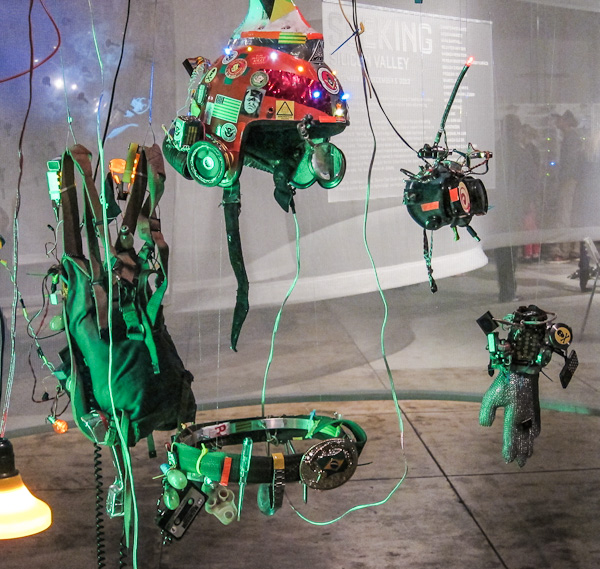
In March of 1983, I got the Philip K. Dick award for Software. My wife and I flew up to New York City for the awards ceremony. Earlier that evening we had dinner with some SF people. Our whole party walked over to Times Square, where we saw Bladerunner. Phil’s friend Ray Faraday Nelson said, “Phil would have loved this movie.”
The award ceremony was in an artist’s loft, with the hallways covered in reflective silver paint. One of the first people I ran into was my artist friend Barry Feldman from college. Incredibly, he was wearing a suit, and he looked like Chico Marx. Although Barry was a great painter, he wasn’t breaking into the gallery scene. On a sudden whim, I told Barry he could pose as me and enjoy the fame.
As I was such an outsider to the SF scene, nobody knew what I looked like, and the substitution worked for about half an hour. Barry stood by the door shaking hands and signing books, twinkling with delight. I stood across the room, drinking and hanging out. And eventually I met some people too.
Later that evening I stood on the bar at one end of the silvery room and delivered a short speech that I’d composed on the plane up from Lynchburg.
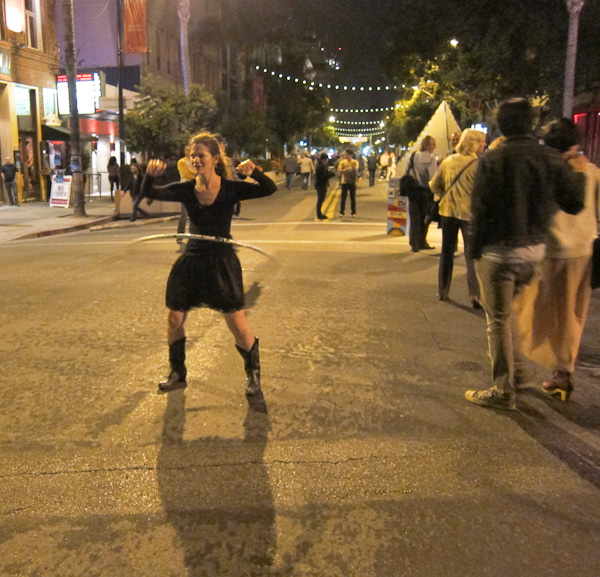
“I’d like to just say a few words about immortality. I have a theory about how artistic immortality works. When you’re reading a well-written book, and totally into it, then you are, for those few moments, actually identical with the person who wrote the book. It’s my feeling that artistic immortality means that the artist is, however briefly, reborn over and over again. We could express this idea in terms of computers. If you can somehow write down most of your program, then some other person can put this program onto his or her brain and become a simulation of you.
If I say that Phil Dick is not really dead, then this is what I mean: He was such a powerful writer that his works exercise a sort of hypnotic force. Many of us have been Phil Dick for brief flashes, and these flashes will continue as long as there are readers.
Up till now I’ve talked about immortality in very abstract terms. Yet the essence of good SF is the transmutation of abstract ideas into funky fact. If it is at all possible for a spirit to return from the dead, I would imagine that Phil would be the one to do it. Let’s keep our eyes open tonight, he may show up.
So hi, Phil, wherever you are, and thanks for everything.”

I switched from teaching to being a freelance writer fulltime, not that my advances were especially good. Over the next couple of years in Lynchburg, I saw the Garbage King of Campbell County a couple more times at parties. One time we were in a house, a house like a house I often dream about, with a front and a back staircase, and the King and I were on a landing, him and his good-looking wife, and he says, “What was that writer guy you talked about? Philip Jay Dick?” Only then he gave me a sly wink. I was stoned enough at the time to think that the “Jay” was a psychic reference to the fact that the first Dick book I ever owned was Time Out of Joint.
I wrote Wetware in the spring of 1985, just before moving to California. Once I got rolling, I wrote Wetware at white heat. I think I finished the first draft during a six-week period from February to March of 1986. I made a special effort to give the boppers’ speech the bizarre Beat rhythms of Kerouac’s writing—indeed, I’d sometimes look into Jack’s great Visions of Cody for inspiration. Wetware was a gift from the muse—insane, mind-boggling, and, in my opinion, a cyberpunk masterpiece.
And later in 1986 we moved to San Jose, California—I’d gotten a job teaching computer science at San Jose Statue University. And in San Jose and I saw Phil again.

The way I found Phil in San Jose involves my friend Dennis Poague. My Wares novel character Sta-Hi, also known as Stahn, also known as Stanley Hilary Mooney, was transreally inspired by a Dennis, occupation freelance mechanic, legal status Blank (like the “Blank Reg” character in Max Headroom), long-term resident of San Jose.
I’d first met Dennis in the mid-seventies when I was teaching college in up-state New York, a state college in a small town called Geneseo, described as “Bernco” in White Light. Dennis’s brother Lee was an English professor who lived across the street from us. Dennis orbited through our town about twice a year. One time he had a whole suitcase full of cheap green pot. It was so bad that he cooked a pound of it into tea. He took the rest of it to the Mardi Gras and got robbed.
Dennis and I got along very well together, each of us happy to meet such a madman. He seemed to have no internal filter—whatever he thought, he said. And it crossed my mind that he could be a god-in-the-gutter sidekick to inspire me in the way that Neal Cassady inspired Jack Kerouac.

When I got to San Jose in the summer of 1986, I hadn’t seen Dennis in a few years, and I was a little nervous about it. He phoned up, and asked me to stop by his apartment in downtown San Jose.
Where he lived wasn’t actually a real apartment, it was simply a small room at the head of a flight of stairs in someone’s house. Wherever Dennis lives there are always four or five half-assembled cars in the driveway and backyard. He was fixing one or several of these cars in return for being allowed to live there. His room was not much larger than a bed; there were shelves on the wall piled with electronic music equipment, cartons of old Heavy Metal magazines, car parts, ragged clothes and hundreds of T-shirts.
“You got no idea how glad I am to see you, Rudy.”
I gave him a Xerox of the typescript of Wetware, and then Dennis took me downstairs to meet his speed connection, a muscular, shirtless fifty-year-old Filipino called Buffalo Bill. I watched them crush up some crystal, snort it, and begin to jabber about skin-diving for jade boulders as big as cars.
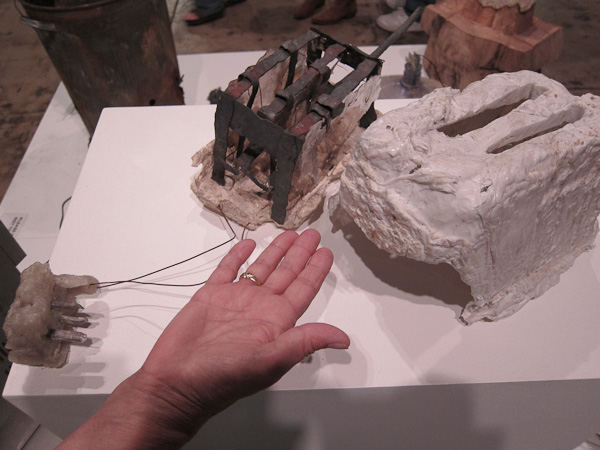
[Toaster handmade from ore and oil, by Thomas Thwaites, seen at SJ Zero1 Biennale.]
I sat around and enjoyed the scene. When it was time to go, I opened the wrong door, a door which led down into the basement. Standing there on the basement stairs was a punk in painter’s clothes and just below him, staring up at me like out of a cover of the PKDS news-letter, was the real Phil Dick, not too tall, balding with a beard with a white stripe in it, and with the unmistakable aura of a hologram from Hell. He and the punk painter were snorting lines of meth off a pocket mirror.
I freaked and closed the door right back up. “Who was that?” I asked Dennis as soon as we got outside. “On the stairs, who were the two guys on the basement stairs?”
“Hell that’s just Tommy the painter. His father owns the place. The other guy with him rents the back room by the garage. He doesn’t talk much. Just…” Dennis made loud piglike snorting noises, the same noise he’d made earlier when I’d asked him what he would do if he really did make a lot of money off jade.
“The other guy, Dennis, that’s Phil Dick. You know, the Philip K. Dick award I got for Software? That was him in the basement. He must not really be dead! He’s living right here in your building!”
“Why didn’t you talk to him?”
“What would I say? But, look, Dennis, do one thing for me. After you read Wetware, give it to him. It’s dedicated to him, wave? ‘For Philip K. Dick, 1928–1982, One must imagine Sisyphus happy.’ That’s from Camus, see, Sisyphus being the proletarian of the gods, you understand, daily proving that scorn can overcome any fate, rolling another wad of paper up to the top of the same old mountain and letting it blow away, just imagine him happy. Does he seem happy?”
“I’ll ask him.”
But Dennis never did talk to Phil. Phil got on his motorcycle and left that house for good, right after I did. I saw him in my rearview mirror, right before I turned onto Route 17. He was all in black, idling on the putt, wearing shades, a greasy old biker, calm with meth. Looked to me like he was headed for South San Jose. He never waved.

A couple of years later, in 1989, Wetware would win me a second Philip K. Dick award.
This award ceremony was at a smallish regional SF con in Tacoma, Washington. It wasn’t like the artists’ loft in New York at all. It was in a windowless hotel ballroom with a dinner of rubber ham and mashed potatoes.
I still wasn’t making much money from my writing, and I’d started working two day jobs, teaching computer science and programming in Silicon Valley. I didn’t have time to write as much as before, which was putting me into a depressed state of mind. Winning the award, I felt like some ruined Fitzgerald character lolling on a luxury liner in the rain—his inheritance has finally come through, but it’s too late. He’s no longer a free man.
In my acceptance speech, I talked about why I’d dedicated Wetware to Phil Dick, and why, in particular, I’d added a quote from Albert Camus about Sisyphus.
“I see Sisyphus as the god of writers or, for that matter, artists in general. You labor for months and years, rolling your thoughts and emotions into a great ball, inching it up to the mountain top. You let it go and—wheee! It’s gone. Nobody notices. And then Sisyphus walks down the mountain to start again. Here’s how Camus puts it in his essay, The Myth of Sisyphus: ‘Sisyphus, proletarian of the gods, powerless and rebellious, knows the whole extent of his wretched condition: it is what he thinks of during his descent. The lucidity that as to constitute his torture at the same time crowns his victory. There is no fate that cannot be surmounted by scorn. One must imagine Sisyphus happy.’”
As so often happens to me, nobody knew what the f*ck I was talking about. Outside the weather was pearly gray, with uniformed high-school marching bands practicing for something in the empty streets.

[Charles Platt in a hat made from a newspaper he found lying on the ground this weekend. I was dragging Charles to Ocean Beach, and he didn’t want to buy a nifty $24 billed cap from the surf shop. On the beach, the hat fell apart, and he was reduced to holding a piece of paper over his head. I was telling him that “Platt’s Hat” might become a standard example in philosophical discourse, along the lines of Occam’s Razor or Buridian’s Ass or the Thompson Lamp. Example of what, though? Equivocating between a raw material and a product crafted from said material with no additional materials whatsoever. The sole difference between material and product being a kind of embedded record of the execution of a craft. “Software is rather a Platt’s Hat entity, I’d say.”]
Did I ever see Phil Dick again? Sure. This weekend I was at an academic P. K. Dick festival in San Francisco, and Phil spare-changed me in the parking lot. I gave him a dollar, and he said he was going to get me a movie deal. From Phil’s mouth to God’s ear!















